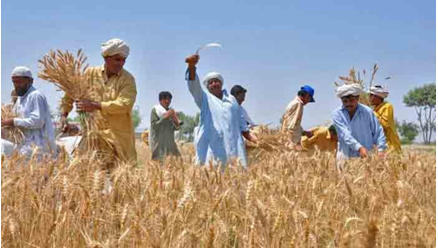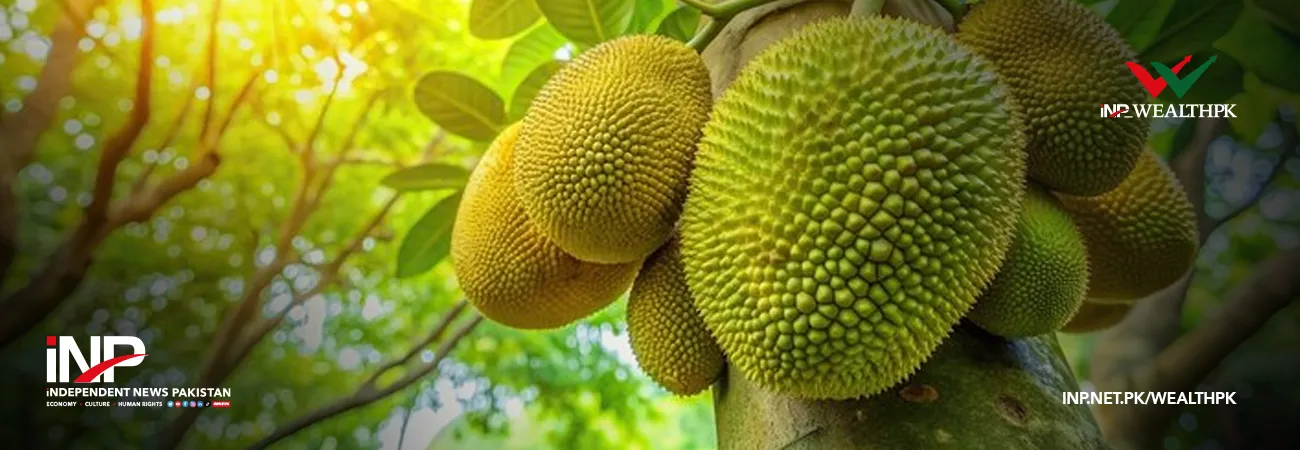INP-WealthPk
Arooj Zulfiqar
Pakistan’s agriculture sector — a cornerstone of the economy — is grappling with mounting challenges threatening its total factor productivity (TFP). These challenges — ranging from technological stagnation to climate change impacts — demand urgent transformative interventions, reports WealthPK.

Agriculture contributes approximately 24% to the GDP and employs a significant portion of workforce, yet the sector’s TFP has not been growing as compared to other countries, reflecting inefficiencies in utilizing inputs such as labor, capital, and resources to achieve optimal outputs. “Low adoption of modern technology and farming practices is a primary factor behind the decline in agricultural productivity,” M. Azeem Tariq, Senior Scientific Officer at the National Agricultural Research Council (NARC), told WealthPK in an interview. He said traditional farming methods still dominated the rural areas, leading to inefficiencies and lower yields.
While the government has introduced initiatives to promote advanced technologies, their adoption remains slow due to limited awareness and inadequate access to credit, he explained. To address this, stakeholders need to prioritize farmer education, expand digital literacy programs, and increase the availability of low-cost agricultural machinery. Encouraging private sector involvement in technology dissemination can also accelerate the adoption rates. Pakistan faces acute water scarcity, with per capita water availability plummeting from 5,260 cubic meters in 1951 to just 908 cubic meters annually as per the Pakistan Council of Research in Water Resources (PCRWR).
Saiqa Imran, Deputy Director at PCRWR, emphasized that water shortages significantly hindered crop irrigation and yield maintenance. “To combat this, introducing advanced irrigation techniques such as drip and sprinkler systems, coupled with water conservation policies, is crucial. Investments in water storage infrastructure and public awareness campaigns on efficient water usage are also imperative. Soil erosion, chemical pollution, and biodiversity loss are further eroding the country’s agricultural capacity,” she said. Dr. Muhammad Hanif, Senior Scientific Officer at the National Agricultural Research Centre (NARC), warned of long-term implications of soil degradation.
“Without significant conservation measures, we risk nutritional deficiencies, loss of arable land, and food insecurity,” he noted. “Integrated soil management practices, such as organic farming, crop rotation, and use of cover crops, could play a pivotal role in rejuvenating soil health. The increasing frequency of extreme weather events —including floods, droughts, and pest infestations — is taking a toll on the agricultural productivity,” he said. Dr. Hanif highlighted that climate change had exacerbated crop failures and diminished crop quality, further straining food security.
To mitigate these effects, climate-resilient agricultural practices must be adopted. This includes developing and deploying drought-resistant crop varieties, expanding climate-smart agriculture initiatives, and enhancing disaster preparedness in farming communities. Financial inclusion programs tailored for smallholder farmers can facilitate the purchase of modern equipment and inputs. Investments in rural infrastructure, such as roads and storage facilities, can reduce the post-harvest losses and improve market access. Increased funding for agricultural research institutions can drive innovations in crop management, pest control, and resource optimization.
Credit: INP-WealthPk













